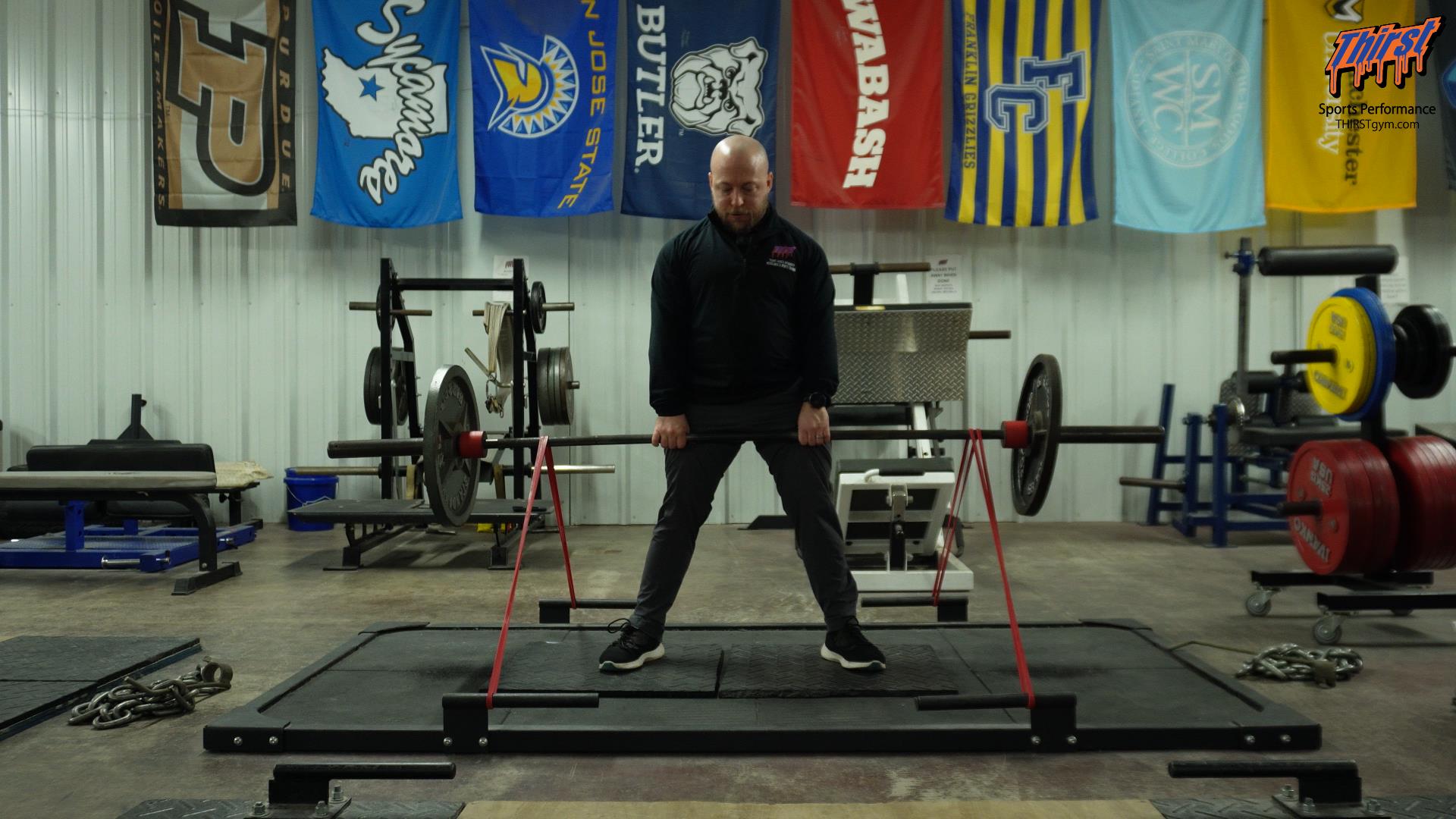Sumo Deficit Deadlift with Bands: Mastering the Technique for Explosive Strength
The Sumo Deficit Deadlift with Bands is an advanced powerlifting variation that combines three powerful training elements: the sumo stance, deficit pulling, and accommodating resistance. This comprehensive guide will break down everything you need to know about this exercise to enhance your deadlift performance.
Watch the video below on how to maximize this exercise.
Understanding the Movement
The Sumo Deficit Deadlift with Bands differs from a conventional deadlift in several key aspects. While both are hip-hinge movements, the sumo stance creates a more hip-dominant pattern compared to the conventional deadlift’s balance between hip and quad engagement. When performed from a deficit, this exercise challenges hip mobility and positioning to a greater degree, making it an excellent tool for developing pulling strength and technical proficiency.
Equipment Needed
- Lifting platform or training area
- Exercise mats (1-3 inches total height)
- Resistance bands
- Band peg attachments or heavy dumbbells (for band anchoring)
- Barbell and weight plates
Setup and Execution
Platform Setup
Create your deficit by placing exercise mats under each foot. For most lifters, a 1-2 inch deficit provides optimal training stimulus without compromising technique. The deficit height for sumo pulls should be more conservative than conventional deficit deadlifts due to the increased mobility demands of the sumo stance.
Band Setup Options
- Attach bands to dedicated band pegs
- Anchor bands under weight plates
- Secure bands using heavy dumbbells
Key Technical Points
- Position yourself with feet wider than shoulder-width on the mats
- Create tension by “wedging” into position
- Maintain a vertical torso position
- Pull slack out of the bar before initiating the pull
- Drive knees out while maintaining pressure through the midfoot
- Meet the bar with your hips at lockout
Programming Applications
This exercise can be programmed in two primary ways:
Main Movement
Use as your primary deadlift variation to build strength and technical proficiency. The band tension should be approximately 25% of your one-rep max deadlift. This creates a smooth strength curve throughout the movement while forcing you to maintain proper positioning.
Dynamic Effort Method
Following the Westside Barbell methodology, program this as speed work:
- Load: 40-50% of 1RM
- Sets: Multiple sets of singles or doubles
- Focus: Maximum acceleration and technical precision
- Rest: 45-60 seconds between sets
Benefits and Considerations
The combination of deficit pulling and band resistance provides several unique training benefits:
- Enhanced hip mobility and positioning
- Increased time under tension in the most challenging portion of the lift
- Improved technical proficiency through a larger range of motion
- Variable resistance matching the strength curve of the deadlift
- Reduced monotony in dynamic effort training
Form Tips
When performing this movement, focus on these technical aspects:
- Maintain vertical shin position
- Create maximal tension before initiating the pull
- Keep the bar close to the body throughout the movement
- Drive your knees out to maintain proper hip positioning
- Meet the bar with your hips rather than pulling it up to them
This exercise variation, popularized by Westside Barbell and Louie Simmons, serves as an excellent tool for developing deadlift strength and technical proficiency. Whether used as a main movement or in dynamic effort training, the Sumo Deficit Deadlift with Bands can help take your pulling strength to the next level.
Remember to start conservatively with both deficit height and band tension, focusing on quality movement patterns before increasing intensity. As with any technical lift, proper progression and attention to form are essential for optimal results.








